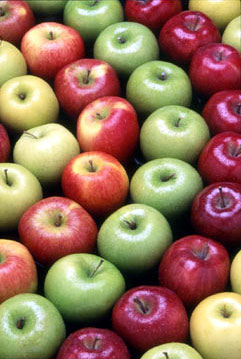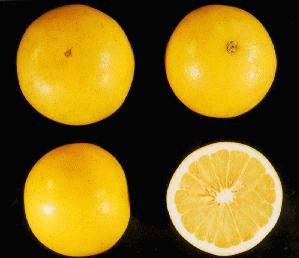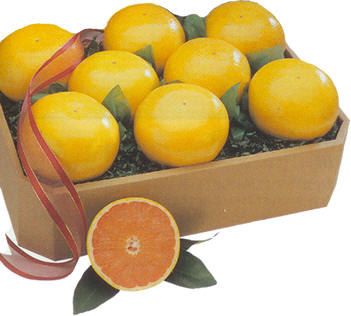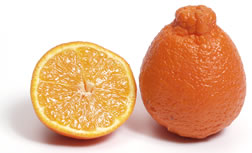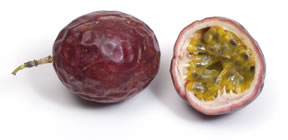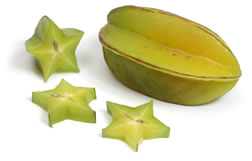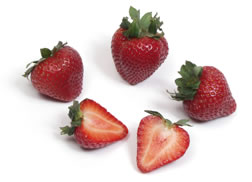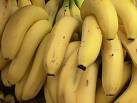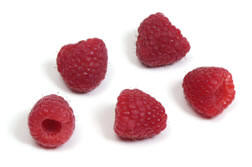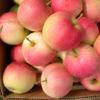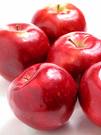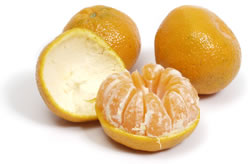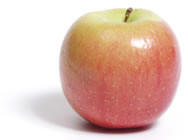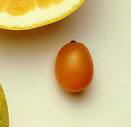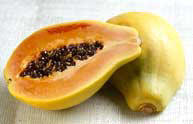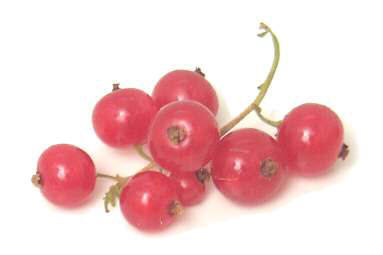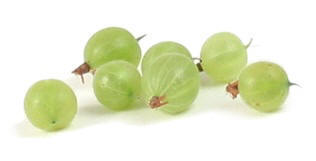A smooth, shiny-skinned fruit first
grown in Asia centuries ago that are now grown in
all regions of the world. Plums are referred to as a
stonefruit because they contain a stone (pit) in the
centre of the flesh which may be either a freestone
or a clingstone. If the stone clings to the flesh of
the fruit the plum is a clingstone fruit, otherwise
it is a freestone. Skin colours of plums may range
from yellow, orange, green, red, purple, to dark
blue or almost black, while the range of flavours
from the flesh can be from tart to very sweet and
juicy. The lighter coloured skins are typically the
sweeter skins while the darker skins are bitter and
more tart tasting. There are thousands of varieties
of plums, the most commonly available falling into
either the European or the Japanese species.
European plums are smaller, oval-shaped fruits with
darker purple skins covering a golden-coloured,
dense, drier flesh that holds together well for
cooking. A freestone variety of plum used for
snacking, canning, stewing, or drying, it is the
European plum that is often dried and made into
prunes, which is why it may be referred to as a
"prune plum" or a "fresh prune". The Japanese plums,
which are clingstone fruits, are grown from a
species originating in Asia centuries ago that have
brought into many different countries to be raised
for commercial production. Often used for snacking,
cooking, pickling, and canning, the Japanese plum is
round or heart-shaped. On the outside, this variety
of plum has a skin that is deep red to blackish-red
in colour, covering a flesh that is golden tan to
red toned. Food stores will often label the common
Japanese plums used for eating as "Red" or "Black"
plums. However, there are also Japanese plums that
will be labelled as "greengage" or "yellow gage"
plums, which have a green or golden yellow outer
skin covering a rich, sweet inner flesh. Kelsey and
Wickson are two common varieties from the green and
yellowgauge species. Another way to categorize plums
is by use, such as a "dessert" plum or a "cooking"
plum. Dessert plums, which are typically sweet and
juicy are good for cooking, stewing and eating out
of hand as a fresh plum. Dessert plums can be served
for snacks, in salads, or cooked into soufflés,
compotes, pies, tarts, and a variety of sauces and
condiments. Some of the common dessert plums include
the Burbank, Gaviota, Kelsey, Santa Rosa, Victoria,
and Wickson. Cooking plums are typically tart
tasting and are not well suited for use fresh,
either for snacking or for fresh fruit dishes. The
flesh has a drier consistency that holds up well
when heated to high temperatures. Best served in
cooked dishes such as pies, tarts, soufflés,
preserves, jellies, and sauces, some of the common
cooking plums include Autumn Rose, Avalon, Beach,
Cherry, Czar, Mirabelle, Queen Rose, Stanley, and
Sungold. When selecting, choose fruit that is plump,
well rounded, with good colour tones, and firm, but
not hard to the touch. Ripe plums should allow a
thumb to depress the skin when slight pressure is
applied. Plums can be stored for 3 to 4 days in the
refrigerator or placed in paper bag at room
temperature to ripen. To prepare fresh, plums can be
cut lengthwise around the stone and twisted to free
the stone if the plum is a freestone variety.
Cooking plums are typically prepared with the skin
on, but if the skin is to be removed, blanches the
plum for 30 to 40 seconds in boiling water.
Back To The Fruit Menu



